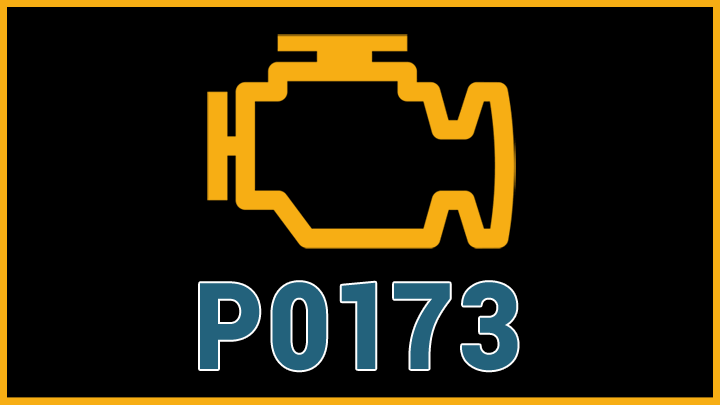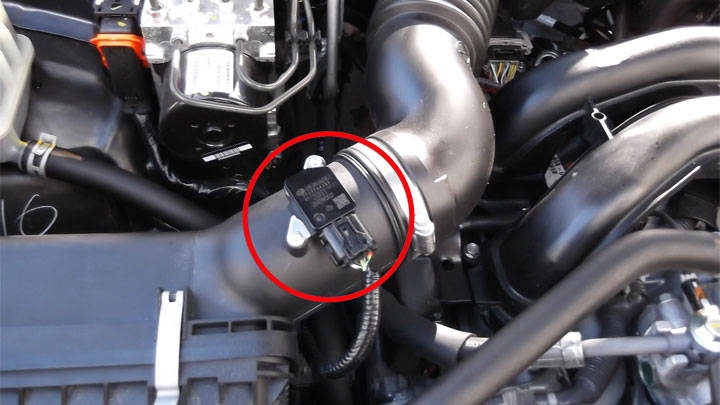P0173 Code (Symptoms, Causes, and How to Fix)
Diagnostic fault codes are invaluable for troubleshooting modern vehicles, quickly pointing to issues. However, understanding these codes is what matters.
Take code P0173; it indicates the engine control module (ECM) can no longer keep fuel trims within range. But what exactly does the mean?
Read on to learn more about DTC P0173, what causes this code to appear and how to fix it, the right way.

What Does Code P0173 Mean?
Diagnostic fault code P0173 is indicative of a bank 2 fuel trim malfunction (P0170 relates to bank 1). More specifically, a vehicle’s PCM/ECM has proven unable to adjust applicable fuel trims to the degree required to correct a “lean” condition on the engine’s #2 bank.
This fault is registered when an engine’s bank 2 oxygen sensors continue to report a lean condition, despite fuel trims for this bank being adjusted toward the maximum end of their threshold.
Though fault code P0173 can be registered at the hands of a fuel delivery issue, it more commonly results from skewed mass air flow sensor readings, or the presence of a significant vacuum leak.
Care should be taken when diagnosing this fault, as a lack of attention can lead to the replacement of costly components that are otherwise perfectly operable.
Related: Code P0170, Code P0171, Code P0174
Symptoms of Code P0173
Diagnostic fault code P0173 is often accompanied by a host of secondary symptoms, some of which tend to be more noticeable in nature than others. Recognizing these symptoms can prove quite valuable when attempting to expedite the affected vehicle’s return to service.
The following are several of the most common symptoms associated with DTC P0173.
- Illuminated check engine light
- Stifled performance
- Hesitation under load
- More pronounced exhaust discharge
- Random misfires
- Reduced fuel economy
Causes of Code P0173

Diagnostic fault code P0173 can be caused by one of a number of different underlying conditions, some of which often prove difficult to pinpoint. Those with a general familiarization of these issues are generally quite adept at sorting out the issue at hand.
The following are several of the most common causes of DTC P0173.
- Dirty MAF sensor
- Inoperative or damaged MAF sensor
- Vacuum leak
- Fuel restriction
- Torn or compromised intake boot
- Faulty fuel injector
Is Code P0173 Serious?
Diagnostic fault code P0173 is generally considered to be relatively serious in nature, requiring timely intervention.
This stems from the fact that continued operation in this state can lead to excessive fuel consumption and eventual catalytic converter damage. This can lead to costly, and otherwise unnecessary repairs in the near future.
Additionally, an engine typically experiences reduced performance when operating with an active P0173 fault code. Because this fault relates primarily to an engine’s active air/fuel ratio and indicates an issue with such ratios, acceleration and operational efficiency under a load are likely to be negatively impacted.
In any event, the root cause of a vehicle’s P0173 fault code should be thoroughly diagnosed and repaired as soon as possible. Doing so can save a wealth of hardship, while also negating the need for future repairs of significant expense.
If you don’t feel equipped to fix fuel trim issues indicated by P0173 yourself, schedule a service appointment right away at a trusted auto repair shop
How to Fix Code P0173

The steps below can be followed to assist in diagnosing your vehicle’s P0173 fault code. As always, factory-specific service literature for your particular model of the vehicle should be consulted before attempting any such repairs.
#1 – Scan for Additional DTCs
Before beginning the diagnostic process, check for the presence of additional diagnostic fault codes with the use of a quality scan tool (here are our favorites). Any such active faults should be thoroughly diagnosed before proceeding.
#2 – Inspect MAF Sensor
The most common overall cause of fault P0173 is a compromised MAF sensor. Therefore, it is important to inspect this sensor for signs of damage or contamination.
If dirty, this sensor should only be cleaned with manufacturer approved products. One should also read and compare live data presented by the MAF, to serviceable criteria designated by the vehicle’s manufacturer. Replace the affected sensor if values fall outside of this threshold.
#3 – Inspect Intake Boot
Carefully inspect your engine’s intake boot for signs of damage. Any such damage found would necessitate the replacement of this component.
#4 – Check For Vacuum Leaks
If all appears well with the engine’s MAF sensor, one should carefully inspect for vacuum leaks.
The engine compartment can be wanded with an unlit propane torch while the engine idles. Listen for a fluctuation in idle, which would be indicative of unmetered propane entering the intake. Remedy any leaks that are found during this process.
#5 – Inspect Fuel System
If you have yet to uncover the cause of your vehicle’s P0173 fault, a careful inspection of the engine’s fuel system will be in order. Applicable fuel pressures should be checked with a mechanical gauge, or alternatively, with a scan tool.
These values should be compared to those specified by the vehicle’s manufacturer.
#6 – Verify Injector Function
A bi-directional scan tool can also be used in conjunction with a mechanical gauge to observe fuel rail pressures as each injector is force-actuated.
If an injector is functioning properly, a momentary drop in fuel pressure should be observed during actuation, before a quick rebound is witnessed. Replace any injectors that fail to produce these results when actuated.
- P0480 Code (Symptoms, Causes, and How to Fix) - Apr 19, 2024
- Car Temperature Gauge Stopped Working? (Here’s Why) - Apr 15, 2024
- Ignition Coil vs Coil Pack (What’s the Difference?) - Apr 8, 2024
